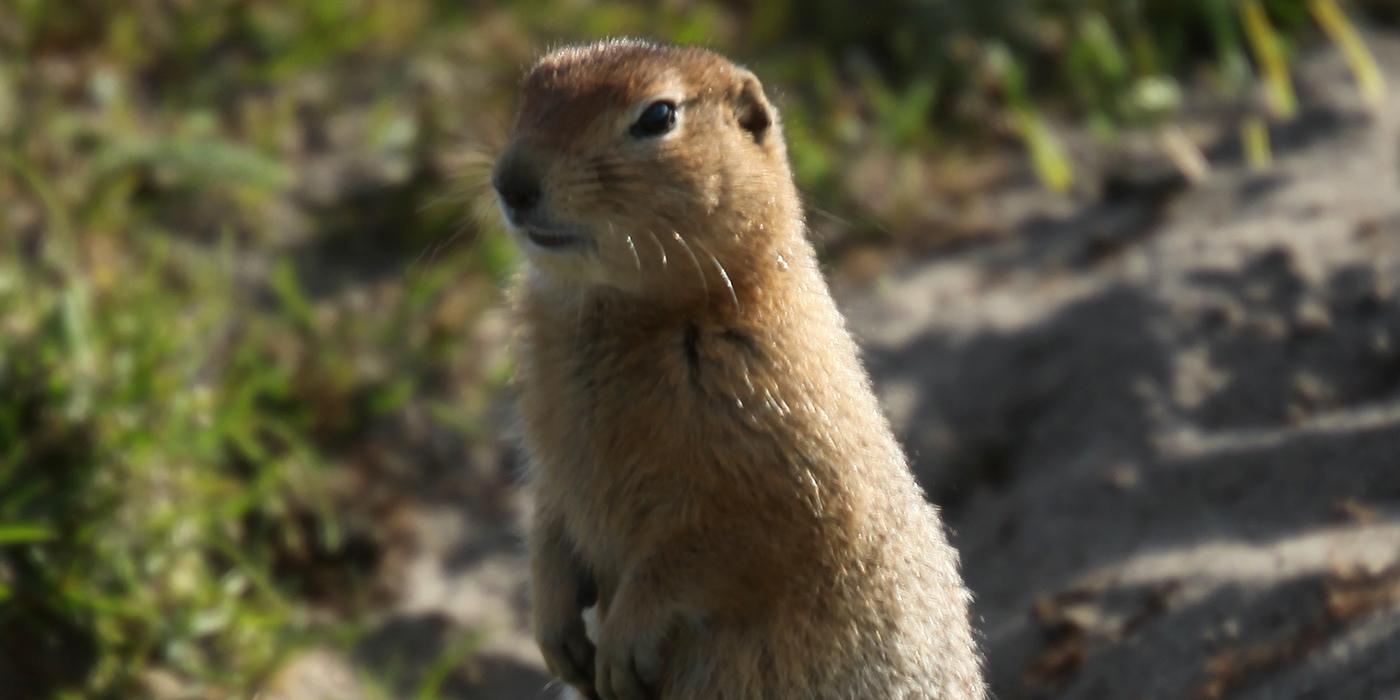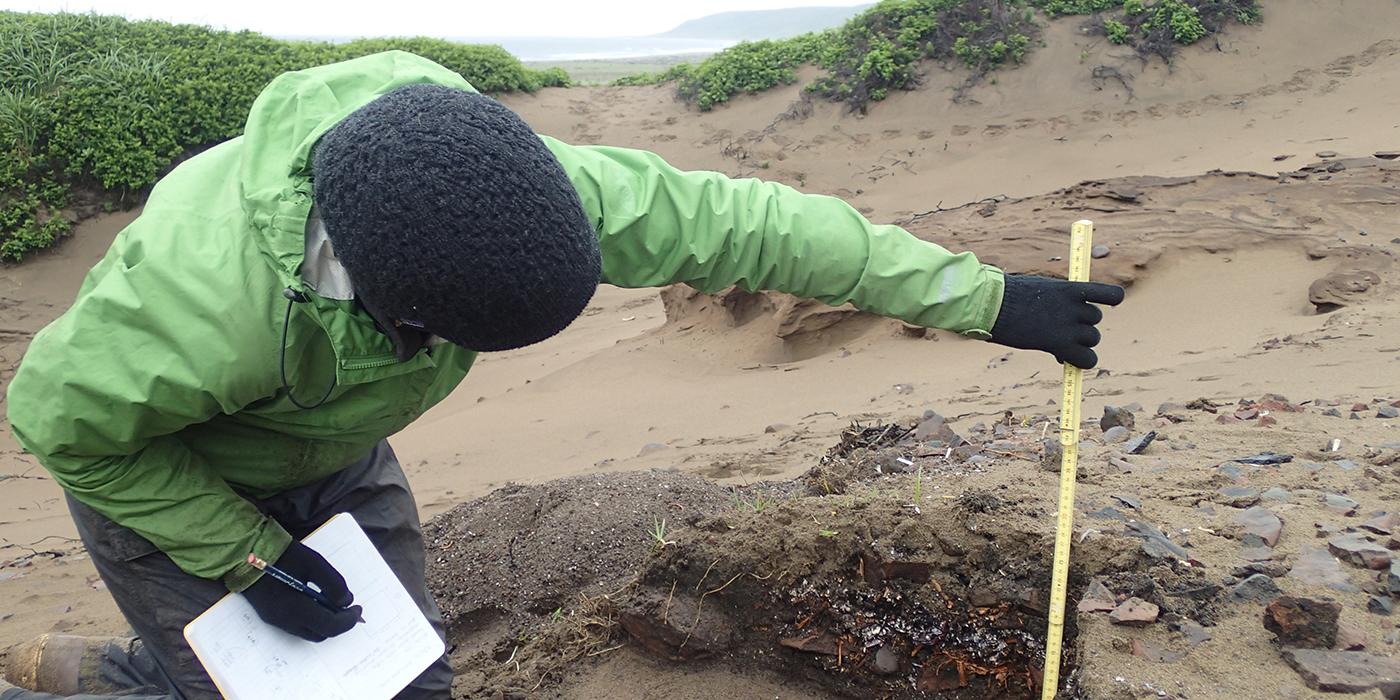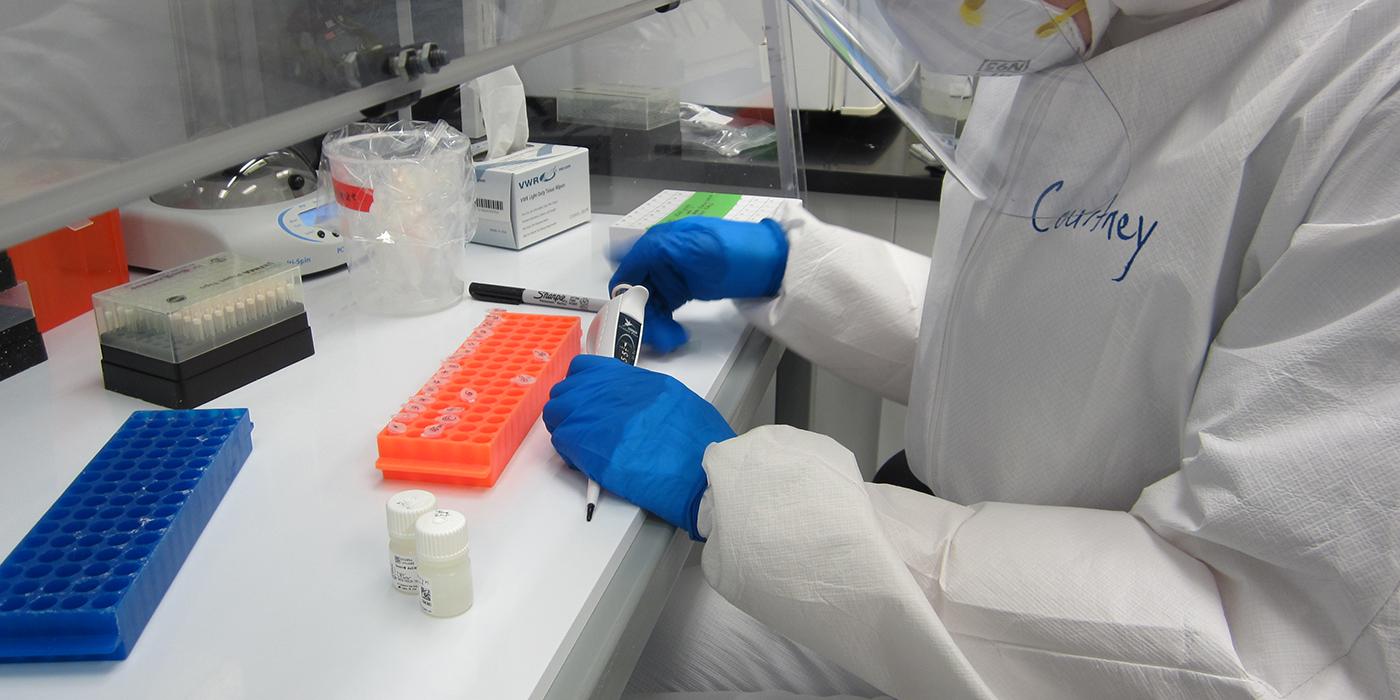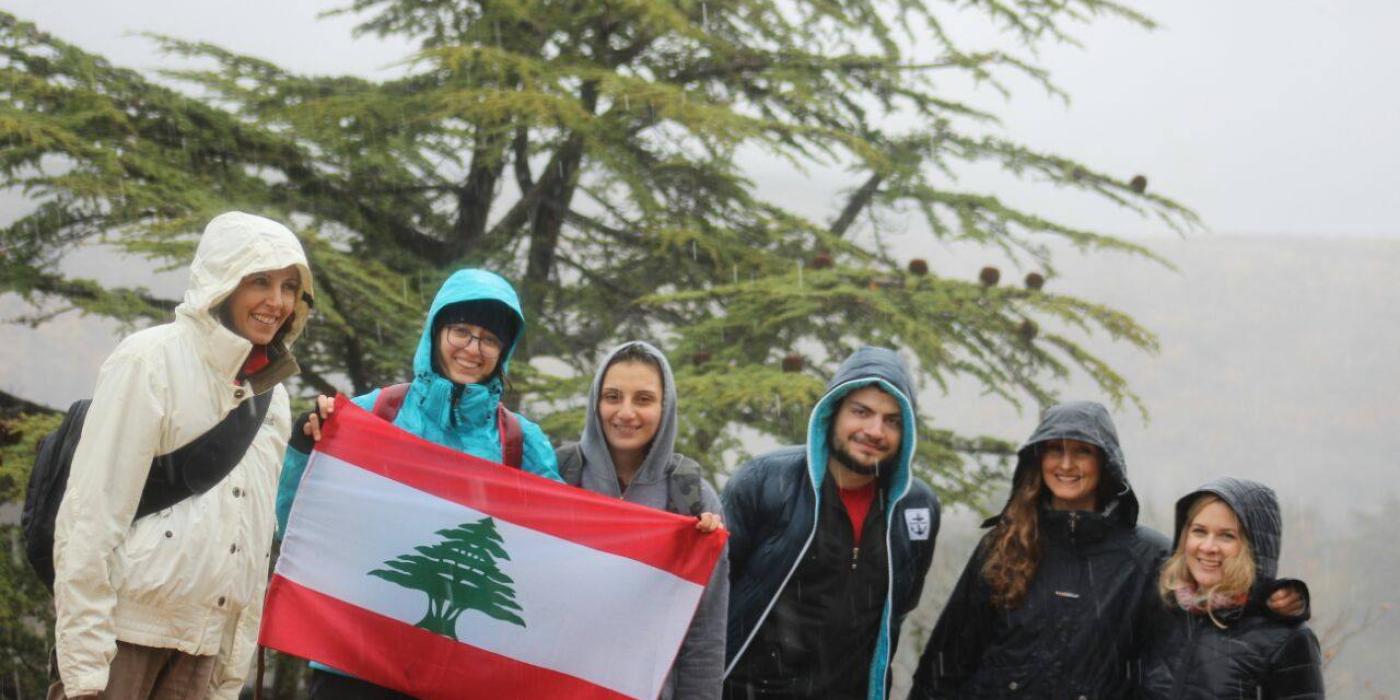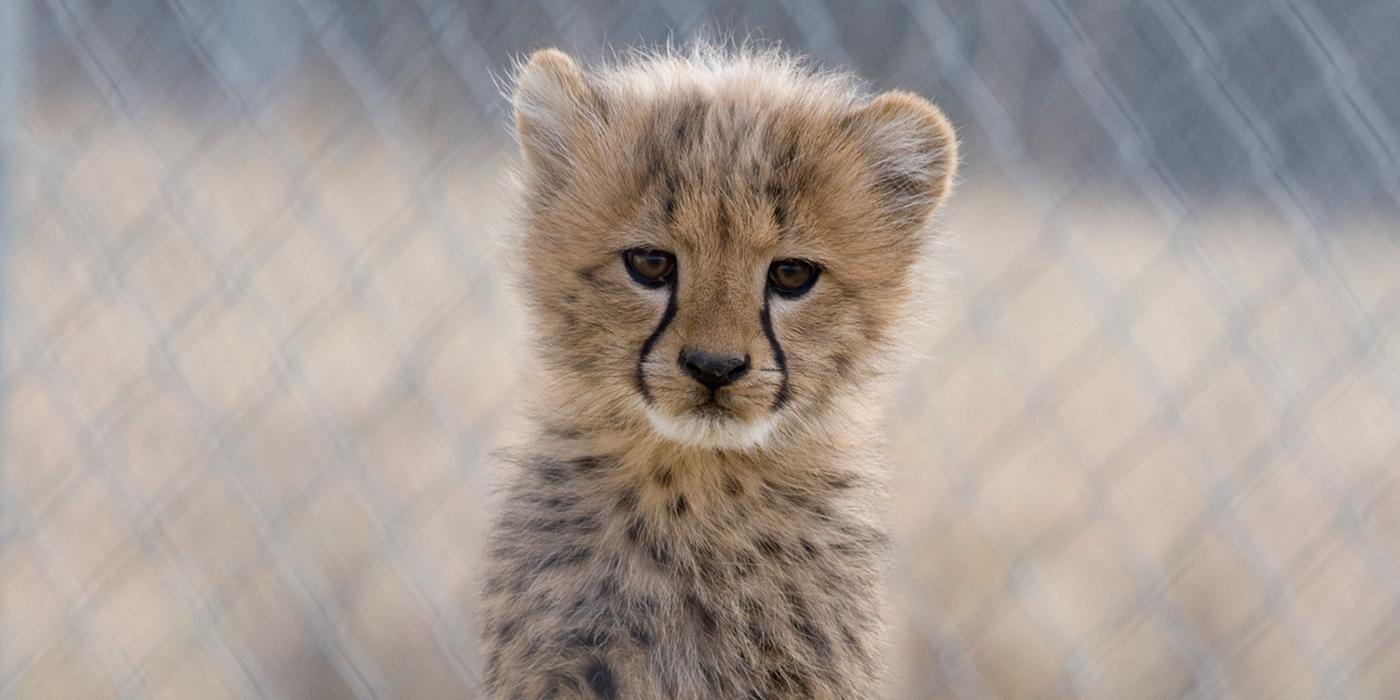SCBI Researchers Use Ancient DNA to Prove Arctic Ground Squirrel May Not Be an Invasive Species
Invasive species are often caught red-pawed wreaking havoc on native species and ecosystems. But how long does a species need to live somewhere before it’s considered “native”? That’s the question raised by researchers who recently proved that the Arctic ground squirrel—believed to have been introduced to Alaska’s Chirikof Island in the early 18th century—has actually been part of the island ecosystem for at least 2,000 years.
The study, “Integrating archaeology and ancient DNA to address invasive species colonization in the Gulf of Alaska,” published in Conservation Biology, was carried out by Catherine West, Courtney Hofman, Steve Ebbert, John Martin, Sabrina Shirazi, Samantha Dunning and Jesus Maldonado. Their work, done in-part at the Smithsonian Conservation Biology Institute’s Center for Conservation Genomics, could have major implications on the conservation and management of the species, as well as native habitat.
Chirikof—a small, uninhabited island in the central Gulf of Alaska—is home to native seabirds as well as Arctic foxes—introduced to the island around the 19th century. Over time, foxes have decimated seabird colonies on the island and, as a result, the U.S. Fish and Wildlife Service, which manages this and thousands of other islands that make up the Alaska Maritime National Wildlife Refuge, has been working to restore the island’s ecosystem by eradicating the fox as well as cattle—also believed to have been introduced to the region around the same time. But the history of the ground squirrel—found to alter landscapes and prey on seabird nests—is more ambiguous, and the agency was interested in identifying when the squirrels arrived on the island so they could determine if there was a need for a squirrel removal program.
“It presented unique experiences to talk about the past and the value of archaeological records for addressing conservation questions,” says Courtney Hofman, one of two first authors of the recent study and, at the time, a predoctoral fellow at SCBI and the Smithsonian’s National Museum of Natural History.
As part of that effort, archaeologists including Catherine West, who conceived the project while studying the Gulf of Alaska’s archaeology, excavated prehistoric sites on the island and found squirrel bones, which dated back at least 2,000 years. In addition, they brought some remains to the Smithsonian’s ancient DNA lab where Hofman, along with Sabrina Shirazi, at the time an undergraduate at the University of Maryland, painstakingly analyzed a portion of the species’ mitochondrial genome and compared it with a gene used to study modern populations. “I was pretty excited,” Hofman says. “I kept waiting for more differences to appear between the ancient and modern samples.”
But what the researchers found instead was that the mitochondrial DNA haplotype (a region of DNA that helped trace the population’s maternal lineage), which they identified on the ancient samples matched exactly with the haplotype in the modern population, which suggested that the squirrels currently found on Chirikof Island were closely related to ancient island populations. However, the researchers don’t have enough data to determine if the squirrels came naturally or were brought over by native Alaskans.
“It’s a timely topic because of the types of questions we can attempt to answer when we incorporate not just people who are doing conservation genetics but when we incorporate people who are doing anthropology, archaeology and management,” says Jesus Maldonado, a research geneticist at the Center for Conservation Genomics and an author of the study. “Then it becomes multifaceted research.”
For Maldonado, who served as Hofman’s advisor on the project, collaborating with students on similarly critical projects and seeing them succeed is gratifying. At any given time, SCBI has students, technicians and postdocs not only from local universities but also from universities across the U.S. and around the world working on a variety of research topics from sequencing a honeycreeper to bolstering genetic diversity in cranes.
Hofman, who is currently an assistant professor at the University of Oklahoma, appreciated the opportunity to interact with SCBI scientists from different backgrounds while simultaneously diving into research that leads to broader discussions that need to be had in management. “What we’re finding—and what archaeology is contributing to—is that humans have impacted ecosystems long before we think they have,” she says. If people are thinking of restoring an ecosystem or recovering an environment from the impact of invasive species, “they need to think carefully about when they want to restore an environment to and what that means.”
Read the paper.
